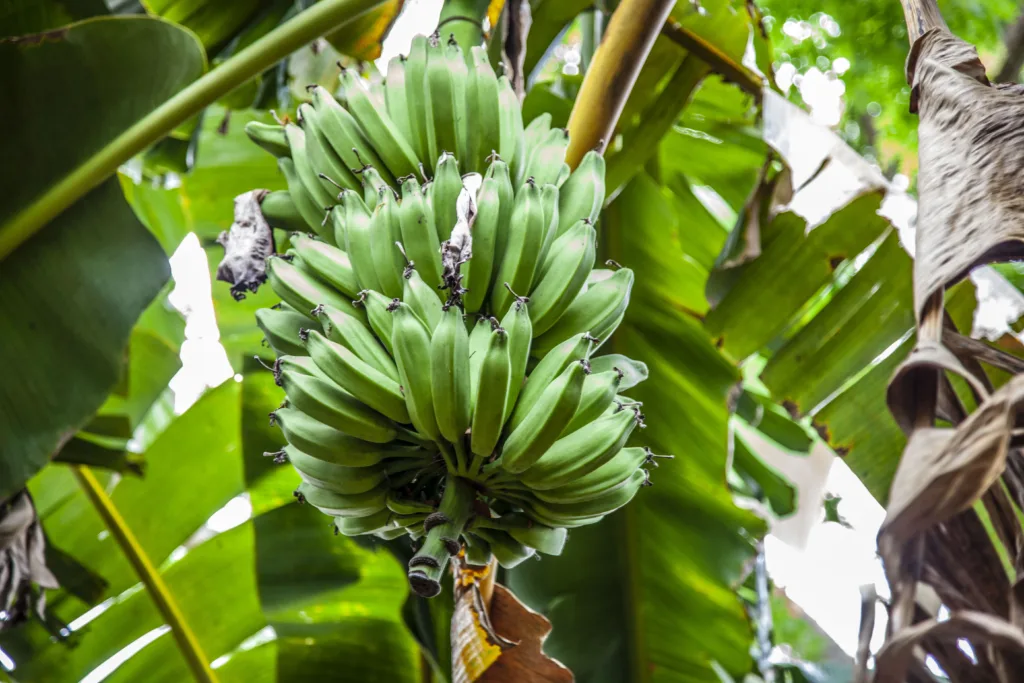Do Bananas Cause Gut Discomfort?
If you’re looking for a snack that’s healthy and easy to digest, you might be wondering if bananas are considered low FODMAP. Bananas are a popular fruit, but they can be a source of digestive distress for those with irritable bowel syndrome (IBS) or other digestive issues. This article will discuss whether bananas are low FODMAP and provide tips on how to enjoy them safely. It will also explain the benefits of eating low FODMAP foods, and how to identify high FODMAP foods so you can make the best dietary choices for your gut health.
Yes, Banana is low FODMAP and can be eaten in moderation as part of a low FODMAP diet.
Low FODMAP Dietary Guidelines
The Low FODMAP Diet is an eating plan designed to reduce symptoms of irritable bowel syndrome (IBS) and other digestive issues. It involves avoiding foods that contain a type of carbohydrate called FODMAPs, which are found in many common foods. The diet has been shown to be effective in reducing symptoms in those with IBS, but it can be challenging to follow due to its complex guidelines. To ensure that you are following the Low FODMAP Diet correctly, it is important to familiarize yourself with the dietary guidelines.
The first step in following the Low FODMAP Diet is to avoid all high-FODMAP foods for a period of time, usually two to six weeks. High-FODMAP foods include certain types of fruits, vegetables, grains, legumes, dairy products, and sugar substitutes. Once this initial period is over, you can slowly reintroduce high-FODMAP foods back into your diet one at a time until you find your personal tolerance level for each food group.
In addition to avoiding high-FODMAP foods, it is also important to make sure that you are eating enough fiber. Fiber helps keep your digestive system healthy and regular, so it should not be completely eliminated from your diet. The best sources of fiber on the Low FODMAP Diet are low-FODMAP fruits and vegetables, such as bananas and carrots; whole grains such as oats and quinoa; nuts; and seeds.
Finally, it is important to make sure that you are drinking plenty of fluids while on the Low FODMAP Diet. Staying hydrated helps keep your digestive system functioning properly and can help reduce symptoms of IBS. Water is the best choice for hydration on the Low FODMAP Diet, but other low-FODMAP beverages such as herbal teas can also be consumed in moderation.
How to Identify High and Low FODMAP Foods
FODMAP stands for Fermentable Oligosaccharides, Disaccharides, Monosaccharides and Polyols. FODMAPs are sugars that can be difficult to digest, which can lead to uncomfortable digestive symptoms such as bloating, gas, pain and diarrhea. Knowing which foods are high or low in FODMAPs can help you identify trigger foods and plan meals accordingly.
High FODMAP foods include certain fruits and vegetables (e.g., apples, pears, onions, garlic), breads and grains (e.g., wheat bread, couscous), dairy products (e.g., milk, yogurt), legumes (e.g., beans, lentils) and processed foods (e.g., ice cream). Some processed meats (e.g., hot dogs) are also high in FODMAPs.
Click here to preview your posts with PRO themes ››
In contrast, low FODMAP foods include certain fruits and vegetables (e.g., bananas, carrots), breads and grains (e.g., gluten-free breads and oats), dairy products (e.g., cheese and lactose-free yogurt), legumes (e.g., tofu) as well as nuts and seeds that contain smaller amounts of FODMAPs such as almonds or chia seeds.
If you are following a low-FODMAP diet for digestive health reasons, it is important to be aware of the different types of FODMAPs in food so that you can make informed choices about what to eat or avoid on a daily basis. It is also important to note that some high-FODMAP foods may be tolerated in small amounts while others may not be tolerated at all; this is why it is important to pay attention to your body’s response after eating various foods to determine your individual tolerances for different types of FODMAPs.
By familiarizing yourself with both high-FODMAP and low-FODMAP food options you will be able to identify which foods work best for your digestive system while still enjoying a balanced diet full of variety!
How to Follow a Low FODMAP Diet
The low FODMAP diet is a dietary approach that is used to help manage the symptoms of irritable bowel syndrome (IBS). It aims to reduce symptoms such as bloating, abdominal pain, and diarrhea by eliminating certain types of carbohydrates that are difficult for the body to digest. This diet can be difficult to follow and requires some planning, but it can be a powerful tool for managing IBS symptoms. Here are some tips on how to follow a low FODMAP diet.
The first step in following a low FODMAP diet is to understand which foods are high in FODMAPs. These include many common foods such as wheat, garlic, onions, apples, pears, honey, milk, and certain legumes. A list of high-FODMAP foods can be found online or in books dedicated to the topic. Once you have an understanding of which foods are high in FODMAPs, you can begin eliminating them from your diet.
Next, you should make sure you are eating enough fiber-rich foods that are low in FODMAPs. These include fruits and vegetables like carrots, celery, squash, berries, and bananas. Whole grains such as oats and quinoa are also good sources of fiber that are low in FODMAPs. Eating enough fiber helps keep your digestive system running smoothly and prevents constipation.
It’s also important to watch your portion sizes when following a low FODMAP diet. Eating too much of any food can cause digestive distress regardless of its FODMAP content. Make sure you’re eating reasonable portions so that your body can properly digest what you’ve eaten.
Finally, it’s important to keep track of how different foods affect your symptoms so you know which ones should be avoided or limited in the future. After eating a meal containing high-FODMAP foods, pay attention to how your body feels over the next few hours or days. If you experience any discomfort or digestive issues shortly after eating certain foods then they may be triggers for your IBS symptoms and should be avoided or limited in the future.
Following a low FODMAP diet requires some planning and understanding of which foods trigger IBS symptoms for you personally. However it can be an effective way to manage IBS symptoms if done properly. With some practice and patience this dietary approach can help provide relief from IBS-related digestive distress.
Click here to preview your posts with PRO themes ››
Common High FODMAP Foods to Avoid
FODMAPs are fermentable carbohydrates that can be difficult for some people to digest. They are found in many common foods, and often cause uncomfortable gastrointestinal symptoms. It is important to know which foods are high in FODMAPs so that you can avoid them if needed. Here is a list of common high FODMAP foods to avoid:
Fruits: Apples, pears, mangos, cherries, nectarines, peaches, plums and watermelon; as well as dried fruits such as dates and figs.
Vegetables: Asparagus, artichokes, mushrooms and onions; as well as legumes such as kidney beans and chickpeas.
Grains: Wheat-based products like breads and pastas; as well as rye and barley.
Dairy: Milk, yogurt, sour cream and ice cream; as well as soft cheeses like feta and brie.
Sweeteners: High fructose corn syrup and agave syrup.
It is important to note that there are some low-FODMAP options available for each of these food groups. For example, bananas are low-FODMAP while apples are high-FODMAP. Similarly, potatoes are low-FODMAP while onions are high-FODMAP. By familiarizing yourself with which foods contain FODMAPs and which do not, you can create a diet that is both delicious and comfortable for your digestive system!

The Benefits of Following a Low FODMAP Diet
Following a low FODMAP diet can provide many health benefits. The diet avoids foods that contain short chain carbohydrates, known as FODMAPs, which can be difficult for some people to digest. By avoiding these types of carbohydrates, individuals can minimize digestive symptoms such as bloating, gas, abdominal pain and other gastrointestinal issues. In addition to digestive relief, following a low FODMAP diet can help improve overall health and nutrition.
By eliminating certain high FODMAP foods from the diet, individuals will be able to focus on eating healthy whole foods that are nutrient dense and easier to digest. This type of dietary approach can also help reduce inflammation in the body and provide more energy throughout the day. Following a low FODMAP diet is also beneficial for those who have food sensitivities or intolerances as it eliminates trigger foods and helps to reduce reactivity.
In addition to the physical benefits of following a low FODMAP diet, there are also psychological benefits as well. Eating a balanced and nutritious diet can help promote feelings of wellbeing and improved moods. Eliminating certain problem foods from the diet may also reduce anxiety around meal times or eating in general.
Overall, following a low FODMAP diet has many potential health benefits for those who suffer from digestive issues or food sensitivities. The dietary approach focuses on avoiding certain trigger foods that can cause symptoms such as bloating and abdominal pain while providing plenty of healthy nutrition from whole foods that are easier to digest.
Tips for Eating Out on a Low FODMAP Diet
Eating out on the low FODMAP diet can be tricky, but it is possible to enjoy your favourite restaurant meals while staying symptom-free. Here are some tips to help you stay on track:
• Check the menu beforehand: Many restaurants have their menus available online, so take a look before you go. This will help you decide what options are available and make it easier to order when you arrive. If there is no menu online, call ahead and ask about the ingredients in their dishes.
Click here to preview your posts with PRO themes ››
• Ask questions: When ordering, don’t be afraid to ask questions about what’s in a dish or how it’s prepared. Restaurants are usually happy to provide extra information and may even be able to adjust dishes to meet your dietary needs.
• Look for options: Many restaurants offer low FODMAP options, such as salads and grilled proteins. If there isn’t an obvious option on the menu, don’t be afraid to ask if they can make something special for you.
• Avoid sauces and dressings: Sauces and dressings often contain high FODMAP ingredients like garlic or onion so it’s best to avoid them. If possible, ask for them on the side so you can control how much is added to your meal.
• Plan ahead: Eating out doesn’t have to mean throwing caution to the wind—a little planning can go a long way towards ensuring that your meal is low FODMAP friendly. Make sure that you take enough time when ordering so that you can explain your dietary needs and make sure that they are understood by your waiter or waitress.
Irritable Bowel Syndrome (IBS)
Irritable Bowel Syndrome (IBS) is a common, long-term condition of the digestive system. It can cause bouts of stomach cramps, bloating, diarrhoea and/or constipation. Symptoms can range from mild to severe and may come and go over time.
The exact cause of IBS is not known but it’s thought to be related to increased sensitivity of the gut and an abnormal response to certain triggers such as certain foods or stress. It’s also believed that hormones, genetics and gut bacteria may play a role in its development.
Treatment for IBS usually involves making lifestyle changes such as increasing fiber intake, reducing stress levels and avoiding trigger foods. Medication may also be prescribed to help manage symptoms. In some cases, psychological therapy can help too.
It’s important to note that IBS is not dangerous and does not increase your risk of other conditions. However, it can significantly reduce your quality of life if left untreated so it’s important to seek medical advice if you think you may have IBS.

Conclusion
Bananas are considered low FODMAP in servings of one medium banana or smaller. Eating a single serving of a banana is unlikely to cause symptoms for most people with IBS. It is still important to monitor your body’s reaction after consuming a banana, as some people may be more sensitive than others.
Eating large servings of banana can be high FODMAP, as they contain higher concentrations of the short-chain carbohydrates fructose and sorbitol. If you have IBS, it is best to stick with a single serving at a time and avoid eating multiple bananas in one sitting.
Banana also contains other beneficial vitamins and minerals that can help keep you healthy. They are an excellent source of dietary fiber, potassium, vitamin B6, and vitamin C. Eating bananas in moderation can provide valuable nutrients while helping prevent uncomfortable IBS symptoms.
Overall, bananas are low FODMAP in small servings and can be included as part of a healthy diet for those with IBS. It is important to pay attention to the serving size and how your body reacts after eating them so you can determine the optimal amount for you.

